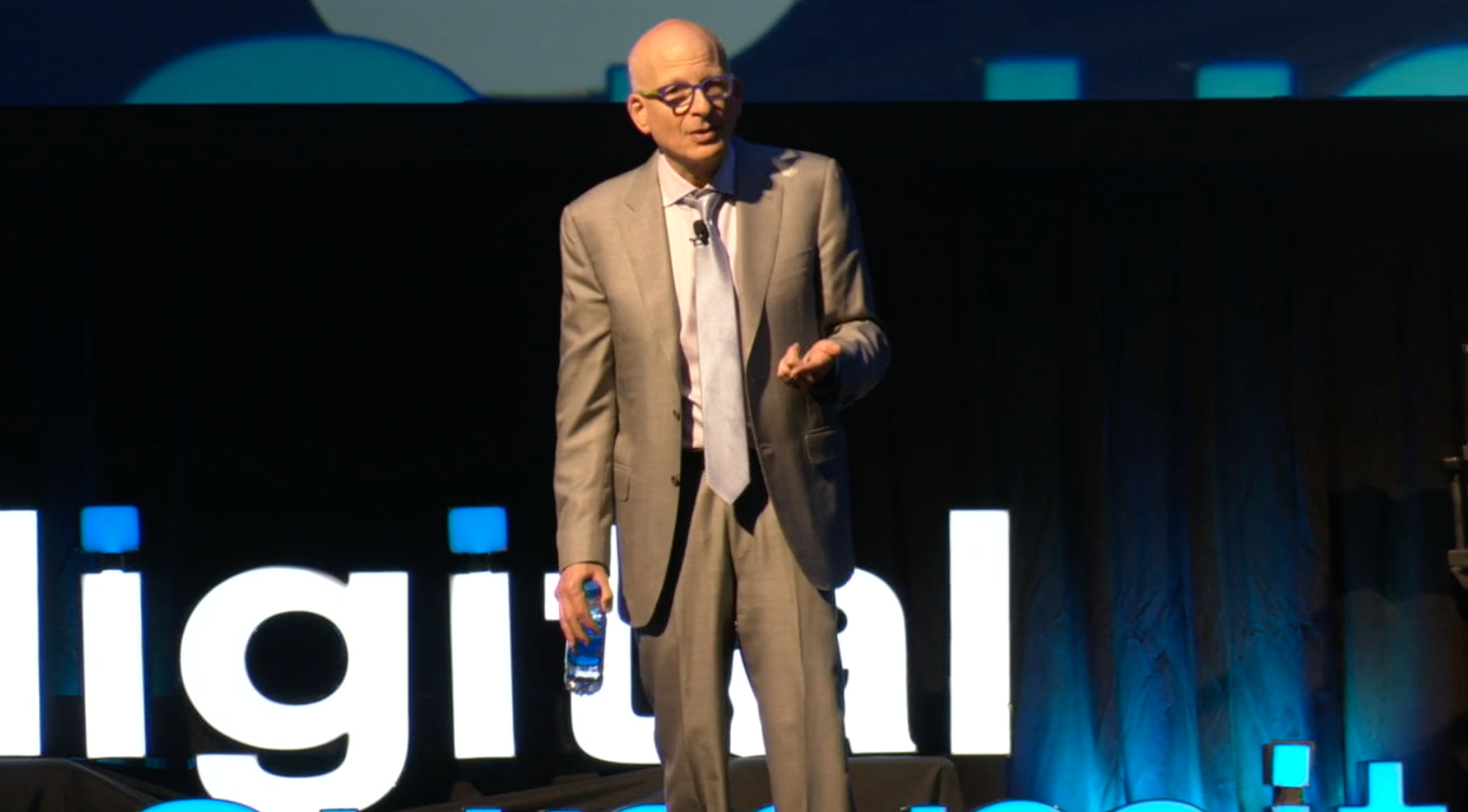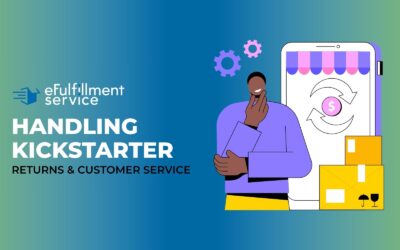How Footprints on the Moon Inspire Plans for a Fulfilling 2020
A new year and a new decade looms in front of us all, ecommerce business people. And if you’re like me, you’re trying to finish the ongoing chores of this year, while simultaneously planning to hit higher targets next year. In my sea of chaos, I found guidance and focus in the words of Seth Godin, best-selling author and marketing hall-of-famer. These bits of wisdom were shared with Steve Bulger, eFulfillment Service COO and I at the Digital Summit in Detroit, and we’re delighted to share them with you, in the hopes that your plans benefit from them, and you’re more successful for it.
 1. Think Small
1. Think Small
Okay, so I’m paraphrasing Godin’s intelligence and referencing an iconic VW ad in this subhead. I do so in an effort to simplify what is a remarkably complex train of thought. To help us understand how the world has changed, and how old techniques won’t work, Godin walks us from the invention of the mass production assembly line, the creation of the middle class and its mass marketing ad campaigns served up on only three TV networks—reaching everyone, selling to everyone. It was a time where choices were few, and to use the parlance of Godin’s Detroit stage, the consumer could have a product in any color he or she wanted, as long as it was black.
Now, today, the internet connects everyone to everything. People all over the world can compete with you, because it doesn’t matter where anyone is. But you can sell to all those people, too. Consumers have unlimited choices for their attention and you have to get permission to talk to them. If you don’t meet their needs, they will find someone who does. We’re now in a mass customization world, and there won’t be any more Heinz ketchups that appeal to everyone. Today, when you survey people about their favorite beer, the most popular beer is “other” because it is the craft recipes that speak to the tastes of smaller groups.
It is a niche marketplace, and your job is to find the people you seek to serve and connect with them—you must find your tribe.
2. Nurture Fans And Take Advantage of the Network
Godin talks about the difference between what we sell and what people buy. We may sell a product, but people buy a story. He points out that people had lots of ways to tell time before they purchased an Apple watch. People purchase an Apple watch because of the way it makes them feel and how other people react to the fact that they have an Apple watch. Cat food flavors are designed to appeal to cat food owners, and make them feel good about what they are feeding cats. The better we understand how our tribe feels, the more we can help them.
It’s not enough to have a good story, you have to engage more story tellers … Godin takes on the marketing funnel, noting that as the audience moves through the funnel, we’ve spent more of our marketing budget trying to convert them. As marketers it is our job to turn strangers into friends, friends into customers and customers into fans. The answer he says, isn’t to try to reach more strangers, it is instead to get the customers to do the work for us, and share our story with others in the tribe.
Recognizing that once we have sold a cat owner some cat food, we also have the opportunity to sell them cat toys, and litter and climbing trees. And, (here’s the “wow” message for me) if we run off and try to find more strangers, we haven’t taken the time to nurture that fan. When we set priorities, nurturing clients we already have is a better investment than chasing strangers.
Godin even describes his own definition of success as writing a blog that readers share with other people.
3. Matter to Your Customer
If people complain that your price is too high, what they are really saying is that this purchase is something I don’t care a lot about, so I’m going with the cheapest solution. If they care, they will see that your product is better or different and worth more. At a time when everyone can Google a list of competitors, price shop, and buy from anyone—don’t be anyone. Our job is find a way to design a product that is better and different and tell people, here’s what it’s worth.
Lululemon looked at the sportswear market and noticed a niche wasn’t being served. Essentially taking the same materials and manufacturing and designing it for the yoga mom, telling her, “We understand you. We see you.” And that’s how they sell leggings for $100, because they designed a product that spoke to the yoga mom.
4. Bring the Customer into the Room
Here’s some direct Godin advice: take your phone and go meet with customers, and take a video of them answering questions about the category and your company. Edit that video down to 60 seconds and show it at company meetings and that will be more important than a 500 page report. (Some of our readers work at an ecommerce company of one, so maybe you can skip the editing step.)
At eFulfillment Service, our 2020 goals include listening to more customers, asking more questions and having more customers in the room. We’re determined to matter, in important and valuable ways.
5. Be Consistent
The praise for consistency rose from a question about being authentic—a marketing buzzword of 2019. Godin disputes the value of authenticity, saying that we intentionally do things that aren’t authentic all the time, like going to work on days we’d rather not, or smiling at folks even when we’re not in the mood to smile. Instead, Godin believes that customers are looking for consistency in brands, because if the brand delivers the same story again and again, then we can trust it.
Consistency shows, “… in how you answer the phone, the products you make, the prices you charge, the stuff you dump in the river, the things you recycle and what you do for your users, or not.” If your tribe values quality, and your product shows up damaged, then that experience tarnishes your trustworthiness. If your tribe values communication, and you don’t provide package tracking, then that is an inconsistency in your story.
6. Write for 7 People
Godin points out that people react to messages that make them feel like they are being seen. So when writing for a small niche, we need to write directly to them, not to everyone. This approach is a change from the 1970s when Proctor & Gamble ran a TV ad designed to speak to the largest group on the Mary Tyler Moore show because everyone saw the same ad. Now, advertising on the internet with keyword targeting, we can write a different ad to speak to different people. People want to engage and click on an ad that speaks to them.
7. Remember There Are Footprints on the Moon.
This summer NASA celebrated the 50th anniversary of the moon landing. Years ago, Godin had the pleasure of meeting Neil Armstrong at a conference in New Mexico, where Armstrong told the story of the Apollo 11 mission. The anniversary has kept this experience top of mind for Godin. They were outside on a mesa in the evening, around a campfire while Armstrong talked about the Apollo 11 project, this heroic challenge of putting a man on the moon. And a full moon rose behind Armstrong. The biggest full moon Godin has ever seen. And Armstrong stops, pauses, and turns around. He points at the full moon and says, “I’ve been there.”
Godin goes on to explain that the NASA team that put a man on the moon, did it with less computer power than the phones in our pockets—indeed, I’ve heard an auto exec explain that it was less computer technology than it takes to keep a CD from skipping while playing in a car.
So, Godin goes on to say, “When you’re faced with the obstacles in front of you, and the opportunities, I hope you will remember that there are footprints on the moon. Look up in the sky and remember: we put footprints on the moon. … We can do work that matters, for people who care—go make your rockets!”
I am so excited for next year. Lots of challenges. Lots of opportunities. But I get to work with a great tribe, doing work that helps them fulfill their dreams.
Happy New Year … Go make your rockets.




